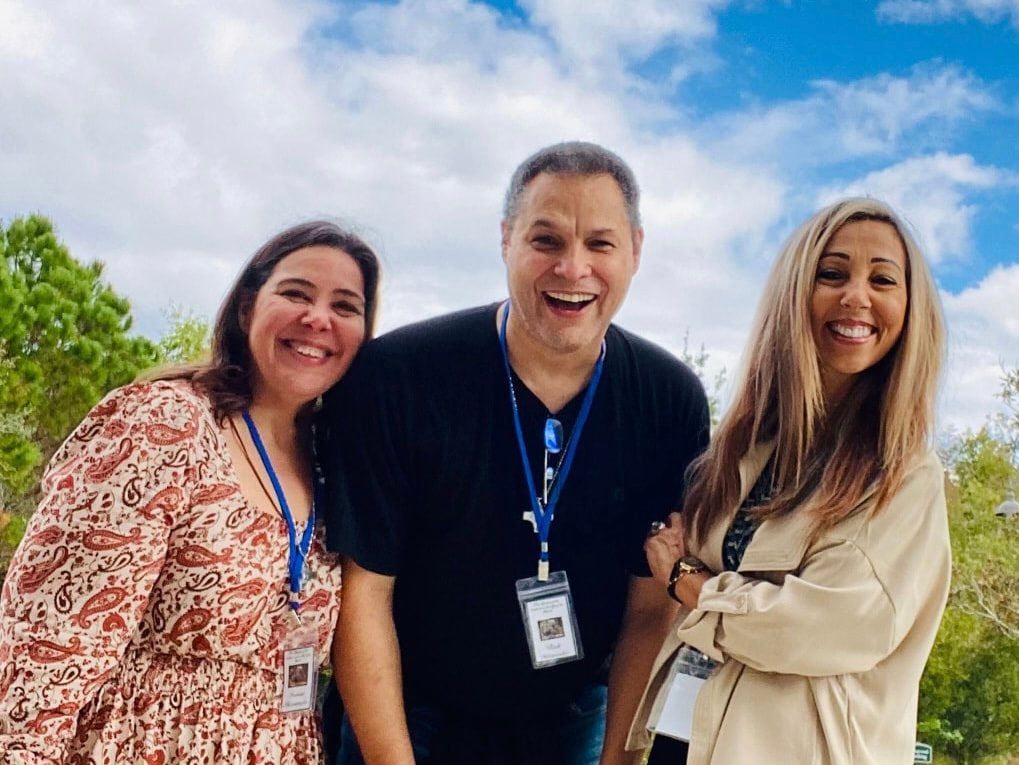ELISHEBA BLOGLaura, Ivonne, and Rick
write about their lives in the Eucharist. |
|
By Ivonne Hernandez St Peter Julian Eymard's Words: "Whereas on Thabor Jesus had rent the veil that covered His Divinity, here He conceals even His humanity and transfigures it into the appearances of bread, to the point that He no longer seems to be either God or Man, and does not act outwardly anymore. He buries Himself in the Species, which become the tomb of His faculties. Out of humility He veils His humanity which is so kind and beautiful. He is so united to the accidents that He seems to be their substance. The bread and wine have been changed into the Body and Blood of the Son of God. Do you see Him in this transfiguration of love and humility? We know that the sun exists even though a cloud hides it from us. Jesus never ceases being God and perfect Man, although hidden behind the cloud of bread and wine. Just as everything was glorious in the first transfiguration, so in the second everything is lovable. We see Him no longer, nor do we touch Him; but He is there with all His gifts. Love, grace, and faith pierce the veils and can recognize His face. Faith is the eye of the soul; to believe is really to see." [1] MEDITATION: The mystery of the Transfiguration speaks to us of transformation. The verb to transfigure is defined in the dictionary as to “transform outwardly and usually for the better.” [2] It is easy to see that in the Transfiguration of Jesus on Mount Thabor, where He revealed His glory, there was an outward change for the better. St Peter Julian tells us that in the Eucharist Jesus “transfigures even His humanity into the appearances of bread.” How is this change for the better? Jesus always preferred humility to glory because His goal is to bring us near Him. If we look with the eyes of faith, we can see that this “transfiguration of love and humility” is the greatest transformation of all. We can draw near to Him now, so near as to consume Him, thus beginning our own transformation into Himself. In Matthew’s account of the Transfiguration, we hear that the disciples “fell prostrate and were very much afraid. But Jesus came and touched them, saying, ‘Rise, and do not be afraid.’” (Mat 17:6) Jesus put aside His glory once again to come down and take care of their needs. This is what He does every day on the altar. He comes down to us, no matter how far down we have fallen, to heal us with His touch and to take away our fear. It is in the Eucharist where He brings “every spiritual blessing in the Heavens” (Eph 1:3) wrapped in a humble lovable package. He brings us the gift of Himself. We just need to look with the eye of faith and we will see His face. The goal of this transfiguration is our own transformation. We are so thirsty for the glory of Heaven that often we are easily deceived and settle for less. We will go after anything that sparkles in the desert only to find it was all just a mirage. The fountain of living water is hidden, buried down deep in the well of the Species in the Eucharist. It is here where our thirst will be quenched. When we remain hidden in this well of love, we will be transformed ourselves, and we will say with Peter, “Lord, it is good that we are here.” (Mat 17:4) SEND: When you meditate on the mystery of the Transfiguration, bring to mind Jesus in the Blessed Sacrament, and remain there, resting in His Light. [1] Eymard, The Real Presence, p. 280 [2]https://www.merriam-webster.com/dictionary/transfigure, 4/23/17
0 Comments
Your comment will be posted after it is approved.
Leave a Reply. |
Categories
All
FOLLOW US ON SOCIAL MEDIA:
AuthorsWe are Ivonne J. Hernandez, Rick Hernandez and Laura Worhacz, Lay Associates of the Congregation of the Blessed Sacrament, and brothers and sisters in Christ. |
Copyright © 2024 Elisheba House Inc.
Elisheba House is a 501(c)(3) non-profit organization. Federal Tax ID Number 84-1894146
Florida registration for Solicitations of Contributions #CH71652
A COPY OF THE OFFICIAL REGISTRATION AND FINANCIAL INFORMATION MAY BE OBTAINED FROM THE DIVISION OF CONSUMER SERVICES BY CALLING TOLL-FREE (800-435-7352) WITHIN THE STATE. REGISTRATION DOES NOT IMPLY ENDORSEMENT, APPROVAL, OR RECOMMENDATION BY THE STATE.
Florida registration for Solicitations of Contributions #CH71652
A COPY OF THE OFFICIAL REGISTRATION AND FINANCIAL INFORMATION MAY BE OBTAINED FROM THE DIVISION OF CONSUMER SERVICES BY CALLING TOLL-FREE (800-435-7352) WITHIN THE STATE. REGISTRATION DOES NOT IMPLY ENDORSEMENT, APPROVAL, OR RECOMMENDATION BY THE STATE.



 RSS Feed
RSS Feed